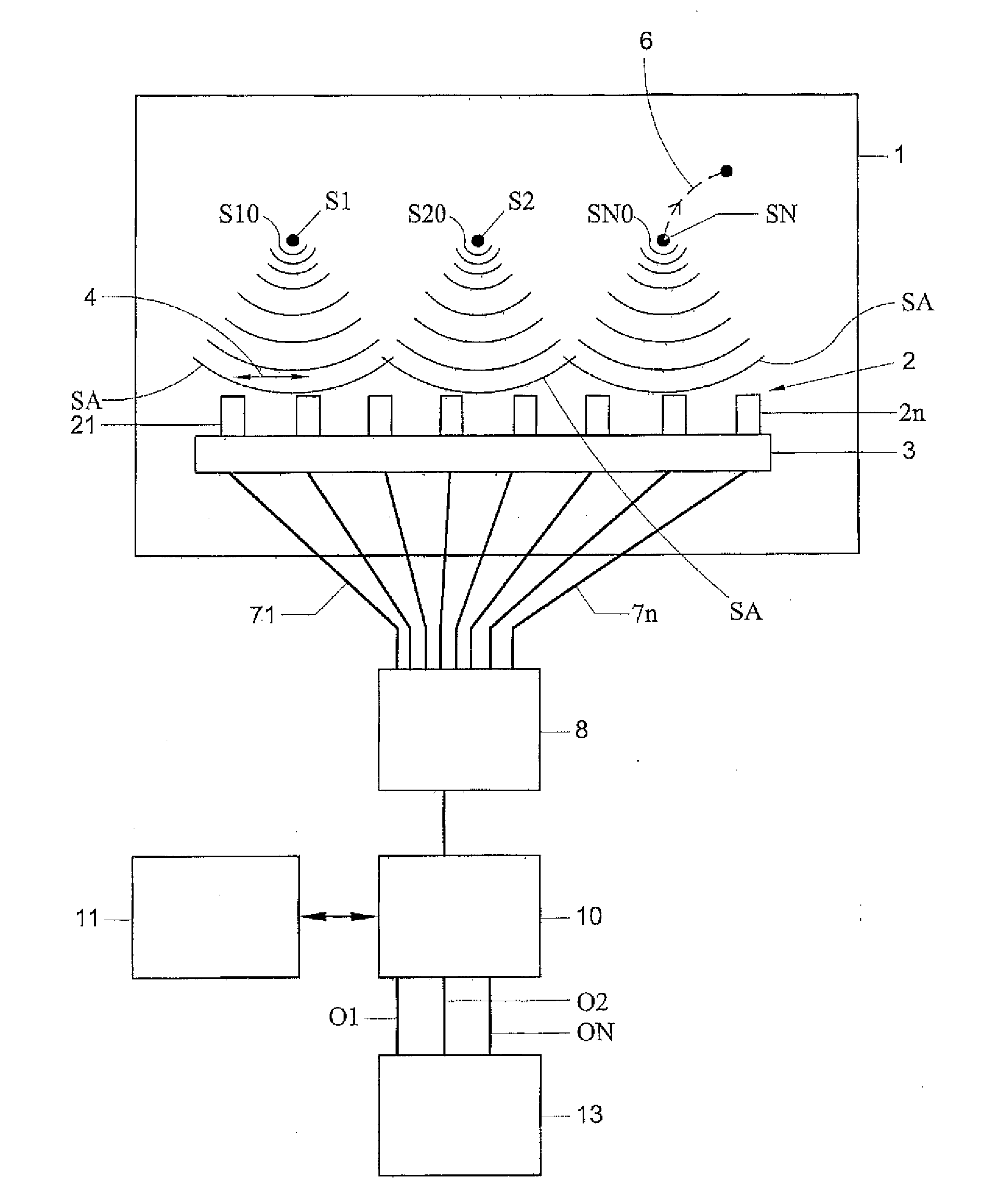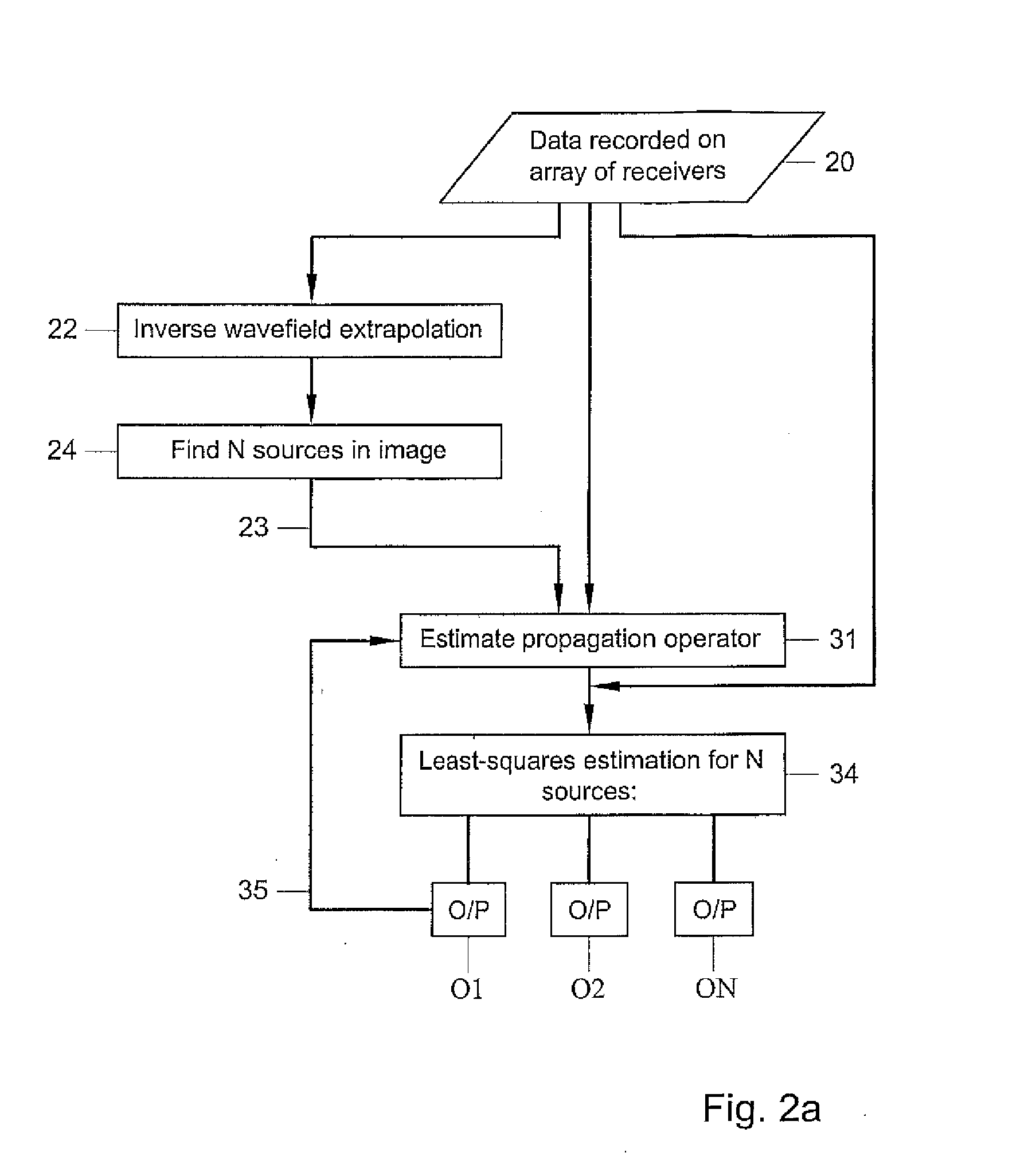System and method for extracting acoustic signals from signals emitted by a plurality of sources
a technology of acoustic signals and sources, applied in the direction of speech analysis, instruments, transducer casings/cabinets/supports, etc., can solve the problems of insufficient performance, inability to locate, track and extract one or more signals originating from different sources int a reverberant environment, and inability to accurately estimate the source location, etc., to achieve the effect of high resolution, accurate estimation of source location and improved accuracy of source location
- Summary
- Abstract
- Description
- Claims
- Application Information
AI Technical Summary
Benefits of technology
Problems solved by technology
Method used
Image
Examples
Embodiment Construction
[0033]FIG. 1 shows a system according to an embodiment of the present invention. The invention has application in various environments including, but not limited to, hospital operating theatres, underwater tanks, wind tunnels and audio / visual conferencing rooms, theatre systems, entertainment systems, car audio systems, car telephone systems, etc. The invention also has application in the area of non-destructive testing. In particular, the invention has application to situations where there is a plurality of speakers in a room, where it is not possible using conventional techniques to track these speakers accurately on the basis of their own vocal sounds, and to distinguish the different speakers from one another. A further application is under water noise measurement, where due to the emergence of a resonant field, the localisation, tracking and separation of the different sources is not possible using conventional techniques. A further application is in wind tunnels and other encl...
PUM
 Login to View More
Login to View More Abstract
Description
Claims
Application Information
 Login to View More
Login to View More - R&D
- Intellectual Property
- Life Sciences
- Materials
- Tech Scout
- Unparalleled Data Quality
- Higher Quality Content
- 60% Fewer Hallucinations
Browse by: Latest US Patents, China's latest patents, Technical Efficacy Thesaurus, Application Domain, Technology Topic, Popular Technical Reports.
© 2025 PatSnap. All rights reserved.Legal|Privacy policy|Modern Slavery Act Transparency Statement|Sitemap|About US| Contact US: help@patsnap.com



